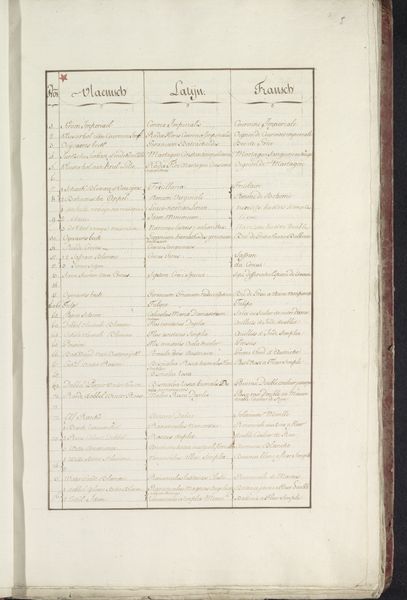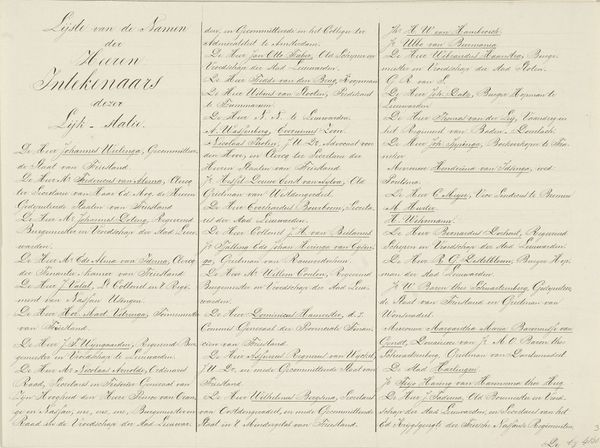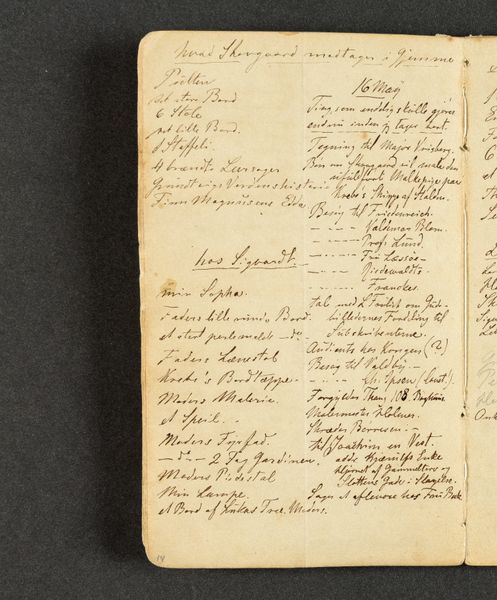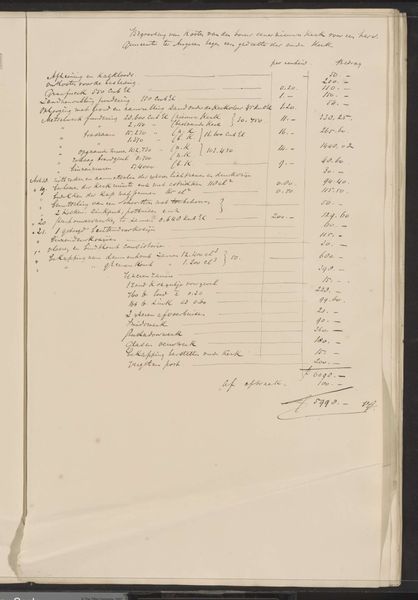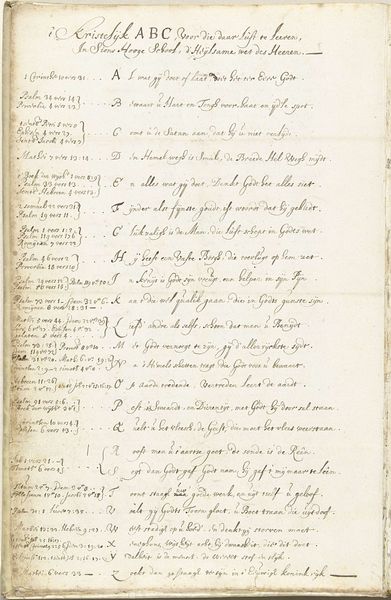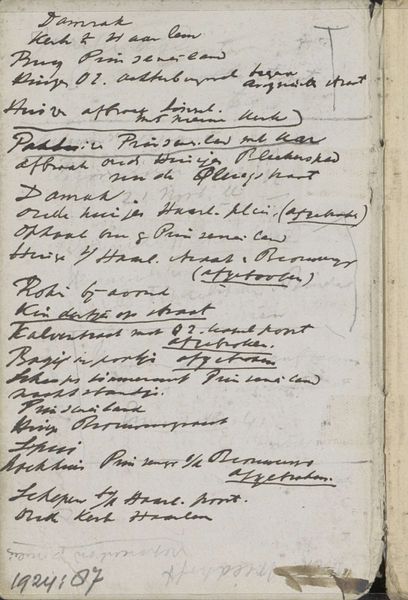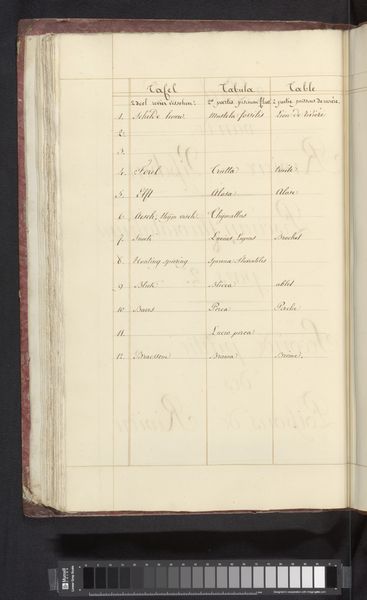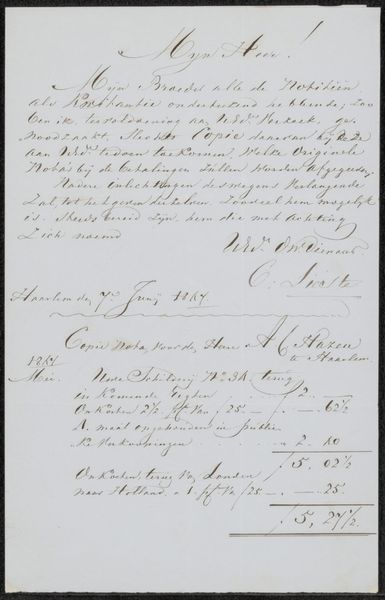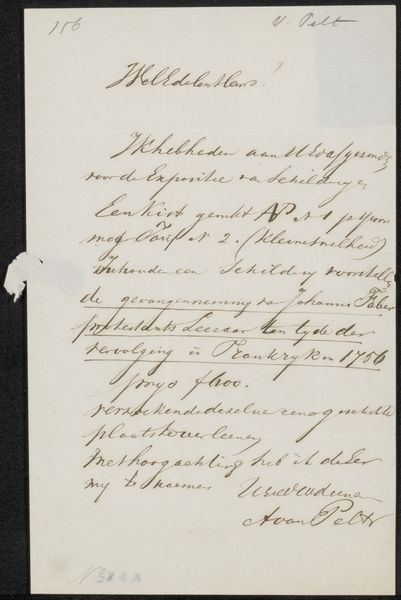
Toelichting op de tekening van de overwinning op Palembang, 1821 1821
0:00
0:00
drawing, paper, typography, ink
#
drawing
#
hand written
#
hand-lettering
#
narrative-art
#
lettering
#
hand drawn type
#
hand lettering
#
paper
#
typography
#
ink
#
fading type
#
stylized text
#
typography style
#
handwritten font
#
academic-art
#
calligraphy
#
small lettering
Dimensions: height 213 mm, width 267 mm
Copyright: Rijks Museum: Open Domain
Editor: So, this is "Toelichting op de tekening van de overwinning op Palembang, 1821" by Barend Willem van der Graaff, made with ink on paper in 1821. It looks like a meticulously handwritten document. The script is so elegant, but difficult to read. What catches your eye about this work? Curator: It's fascinating how this piece exists at the intersection of art, history, and colonial power. The drawing, rendered as a document, frames the "victory" at Palembang as a formalized event, almost like a legal declaration. We need to consider the role of imagery in shaping public perception of the Dutch colonial project. Editor: Public perception? Curator: Absolutely. Art during this period often served a propaganda function. Consider how this document might have been circulated or displayed. What audience was van der Graaff trying to reach, and what message was he conveying about Dutch dominance? Was it intended to justify colonial actions or solidify a sense of national pride? Editor: I guess I hadn't thought of it as having such a loaded political agenda. It just looked like a fancy bit of penmanship. Curator: And that’s part of the skill! It cloaks a violent act—a colonial invasion—in the guise of orderly documentation, lending it an air of legitimacy. The careful lettering style and formal presentation contribute to this effect. The act of documentation is the artistic and political act. Editor: So, by understanding the socio-political context, we can read the artwork more critically, seeing past the aesthetic appeal to its deeper message about power and control. Curator: Exactly! And perhaps then consider how these historical visual strategies still reverberate in contemporary visual culture. Editor: That's a completely different way of seeing it than how I started out. Thanks!
Comments
No comments
Be the first to comment and join the conversation on the ultimate creative platform.
